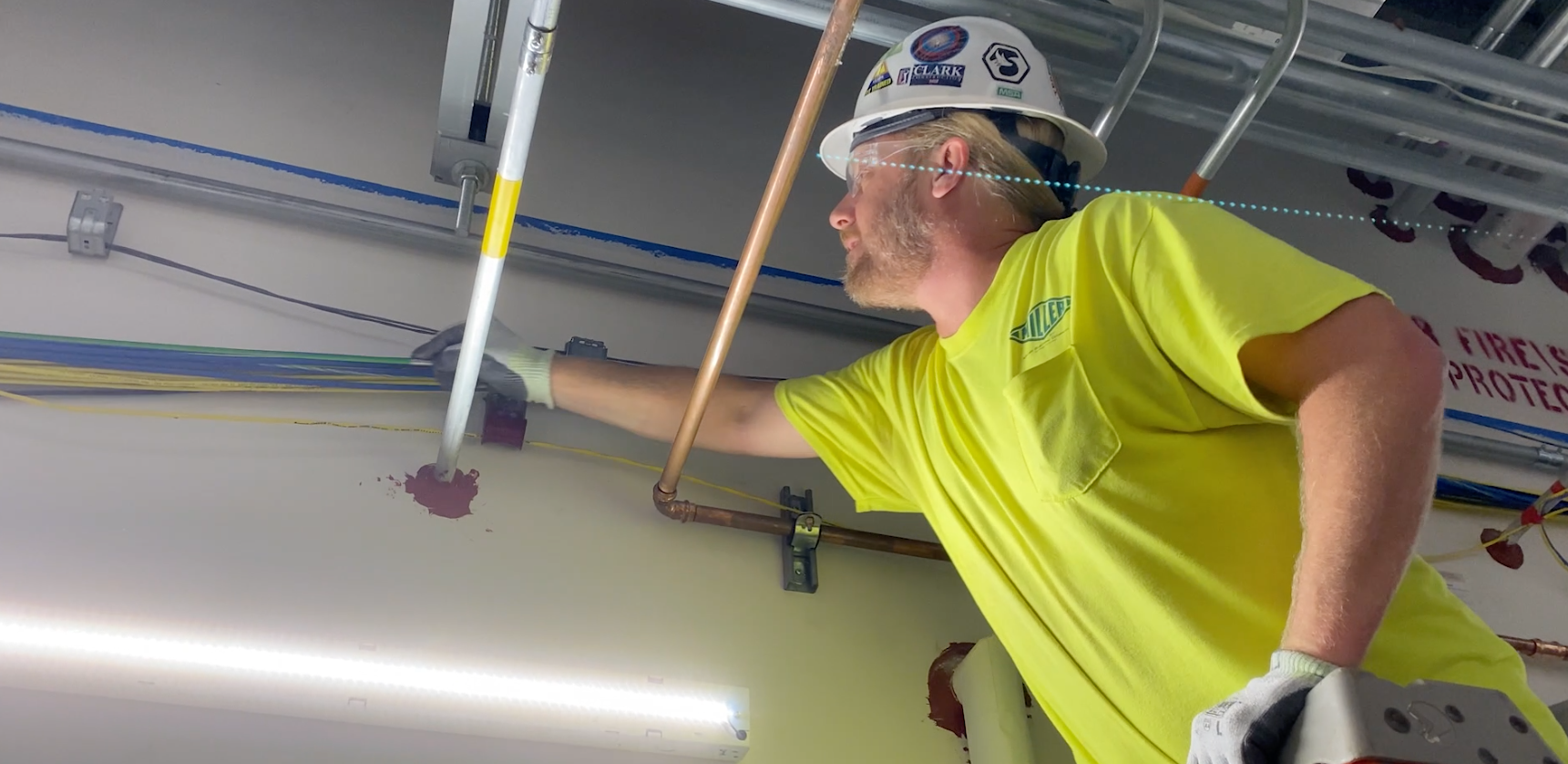It’s incredible what the new Borowy Family Children’s Critical Care Tower looks like now compared to when we began this highlight series five months ago.
Miller has been there every step of the way, and we’re proud to have provided the full electrical installation– including the hospital’s connectivity infrastructure.
Our Information and Communications Technology (ICT) team installed the cabling for the facility’s entire telecommunications network. As patient records, diagnostic information, and even the operating machines themselves increasingly rely on networked electronics, the amount of data that must be transmitted, managed, and stored has skyrocketed.
“This hospital’s got a whole handful of different systems,” Senior Project Associate Alicia Dawson said.
“So, anything from your nurse call system, like when you’re lying in bed and you need the nurse to come in, the switches that you pull, from that to powering your tv, your lights. The nurses being able to monitor you. There’s neuromonitoring, there’s the patient monitoring. So, there’s a lot of different systems that the nurses will actually use that all have to talk to each other pretty much in case of an emergency. And then a whole other handful of systems that are purely for the entertainment of the children, being that it’s a children’s hospital.”
Miller ICT and the electricians from Local Union 177 installed all that cabling, which is the backbone of the hospital’s connectivity.
ICT Senior Tech Shaun Holton further explains the nurse call system.
“Our nurse call system is a patient care communication system that helps the patient and the nurse communicate if there’s an issue with any vitals that are too low or too high, the nurse can actually see that on their nurse station master station and they can relay that information to another nurse,” Holton said. “And they can push a button on a wall, which is a GR, and that GR will let the nurse know if the vitals are too high or too low, and they can send a nurse into that room to check on that patient.”
Our ICT team working on the Children’s Critical Care Tower is very specialized and moves very quickly.
“Our team, we have eleven people currently, we have about three or four pulling data cable, one or two on the DAS system, two guys on the nurse call system,” Project Supervisor Tony Domingo said. “And they’re all just working, typically working floor by floor, working up.”
DAS stands for Distributed Antenna System, and it’s a signal booster that improves wireless signal in a building. Not only does it boost cell phone service for patients and their families, but it also is of critical importance to first responders in the event of an emergency.
“DAS, it’s for the firefighters so they have better signal in hard-to-reach places like the stairwells and basement stuff like that,” Domingo said. “So we’ll put signal boost throughout the building. And just in case there’s ever an emergency or something like that, firefighters will always have a signal throughout the building.”
Structured cabling is organized, it’s intentional, and every cable used here is for a reason. And while there are a lot of cables, they all serve a specific and different purpose. Dawson said because of that, she learns so much from her team every day.
“The team itself, like the atmosphere, they’re awesome,” she said. “I’ve learned so much. Not coming from the field, I rely on them for anything and everything. So, there’s days I come out here and just hang with them and watch what they do. And just joking around and being able to learn from them, I think it’s the best.”
